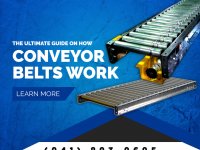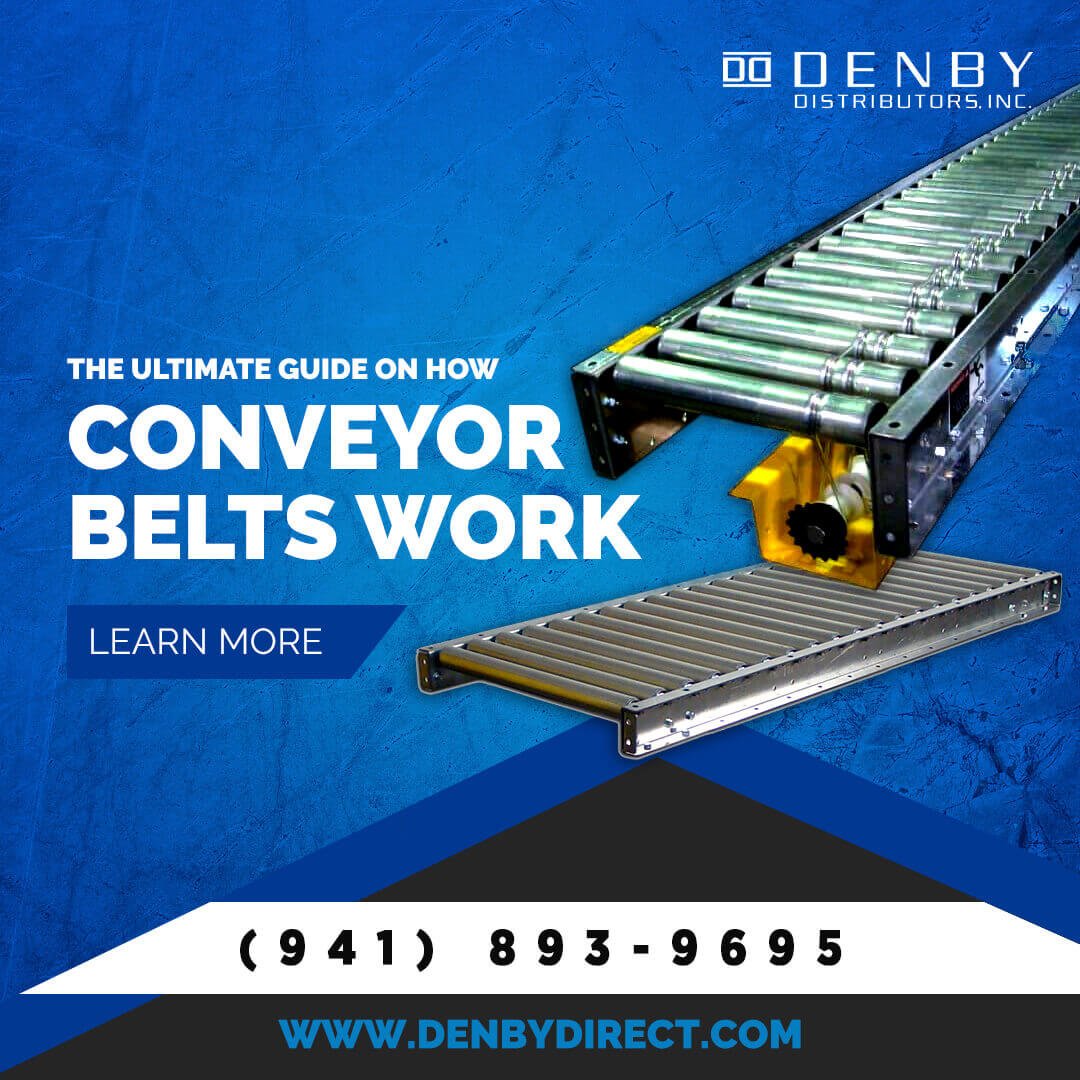Tags: Belt Conveyor, Conveyor Belt Systems, Best Gravity Conveyor Models, Conveyor Slave, Aluminum Gravity Conveyor
Conveyor belts are tried and true machines that can positively impact your business processes. After all, there's a reason why these machines have revolutionized commercial industries.
If you're thinking about making an investment, you're probably wondering how conveyor belts work and what their maintenance needs are. In this article, we'll tell you everything you need to know.
Read on.
What Exactly Are Conveyor Belts?
You've likely encountered conveyor belts quite a bit in your lifetime. They're used at airports, scrapyards, industrial buildings, warehouses, etc. They're even used in some restaurants, and you've technically ridden on one—if you've ever been on an escalator, that is.
Conveyor belts are mostly known as mechanical handling equipment. Their primary use is to transport materials over a range of distances within a certain location. Wherever items need to be moved from one location to another, a conveyor belt will likely be there getting the job done.
Of course, industrial conveyors are built to withstand the weight of heavy-duty items and extreme weather conditions. Overall, conveyor belts are there to make item transportation much simpler and quicker. Without them, we would have to depend on human labor to handle the various materials. This would be much less efficient, more costly, and much more dangerous.
Conveyor Belt Materials and Applications
There are a few different types of conveyor belt systems that you can choose from. Additionally, conveyor belts are applicable systems for virtually every industrial process out there, which means if you're thinking about investing in one for your business, you won't be disappointed.
Here's the breakdown of the different types of conveyor belts:
General-Use Belts
General use conveyor belts are the most popular of the bunch. They're typically made from a variety of materials, including rubber, nylon, polyester, PVC, and even neoprene.
Rubber conveyor belts are commonly used in the mining and milling industries. PVC conveyor belts are typically used among grocery stores, and airports use a mix of rubber, neoprene, and polyester to handle luggage, packages, and foot traffic.
Filter Belts
Filter conveyor belts are primarily used in the water industry. Their purpose is to filter out contaminants, toxins and drain unwanted liquids. This type of conveyor belt allows for these items to flow through rather than continue to move along with the rest of the liquid.
Filter belts are also used in the skincare industry and for making oils.
Woven Metal Belts
Woven belts are formed by interlocking metal chains. The general design is meant to allow consistent airflow as the items pass along.
Woven metal belts are most commonly used to mitigate heating, cooling, and drying processes within the electronics, food, and glass-working industries. Many manufacturers often offer pre-fabricated designs or custom-built woven metal belts to fit the specific needs of each business.
Hinged Belts
Hinged belts are usually made of metal. Their interlocking hinged design provides for a flat, solid surface that rotates around a pulley system. This design also makes them incredibly tough and durable.
Product-handling companies generally use hinged conveyor belts to move smaller items, scraps, and recycling.
Plastic Interlocking Belts
Plastic interlocking belts offer an alternative to woven metals and fabrics. Once again, the interlocking design makes for a tough and durable machine overall.
Plastic interlocking conveyor belts are used in many different industries, including food handling, automotive, packaging processes, and more. These belts are best for applications that require frequent cleanings. They also require frequent replacement.
How Conveyor Belts Work
So, how does a conveyor belt work exactly?
For starts, a conveyor belt is set up in a loop shape with a wide belt that's fixed onto conveyor rollers. The entire loop is connected to multiple rotors, which are powered by motors.
The looped part of the machine is the designated "conveyor belt," consisting of several layers of one of the above-listed materials. The initial layer is what gives the conveyor belt its structure, while the second layer provides traction for the items being moved. The entire belt is usually fixed to two or more rotor wheels.
As the motor powers on, the rotor wheels begin to turn, which causes friction with the belt. This friction is what causes the smaller rotors to move, and eventually, the entire belt is moving in one direction along with its rotors.
Most conveyor belts depend on friction to keep the belt in place as it moves raw items. Some require mounts to hold the belt in place, especially if there will be a lot of twists and turns as the items move along.
The Benefits of a Conveyor Belt System
Understanding how conveyor belts work is half the fun. Learning about how they can benefit your business operations is even more interesting.
Here's why you should invest in a conveyor belt system:
- They can efficiently transport a wide variety of items
- You can use them for single-direction movement, multi-direction movement, and they can move on an incline, whether it be vertical or horizontal
- Regardless of how they're used, they're designed to keep the items in place. That means you don't have to worry about damages during transport
- They can be custom made accordingly with your specific needs
- They reduce labor costs while increasing efficiency
- They're long-lasting and easy to maintain
- They need less power to function
Whether you need a light-weight or heavy-duty machine, you'll only benefit by investing in a conveyor belt system. You'll also be surprised at how they can impact your overall productivity and efficiency.
Revolutionize Your Business
Now that you know how conveyor belts work and the advantages they bring to the table, it's time to think about investing in one for your business. A conveyor belt is a tool that will change your workflow for the better, so you and your workers can focus on the other areas of the job.
Contact us today to talk conveyor belts—and to find out more about the quality tools we have to offer at wholesale prices.




